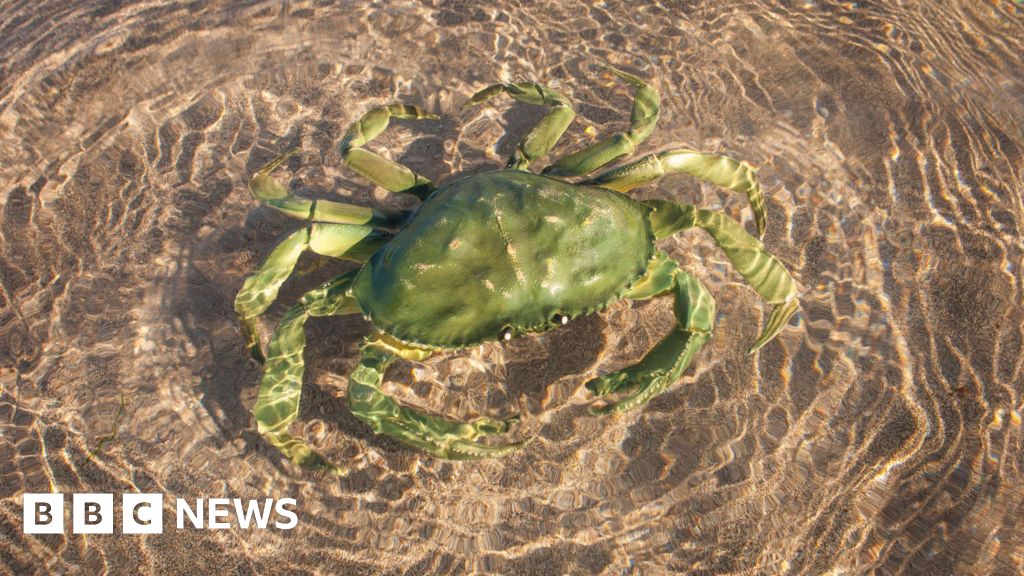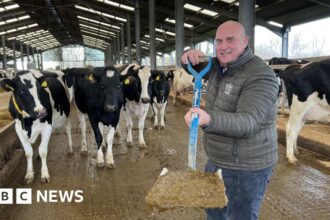Bea SwallowWest of England
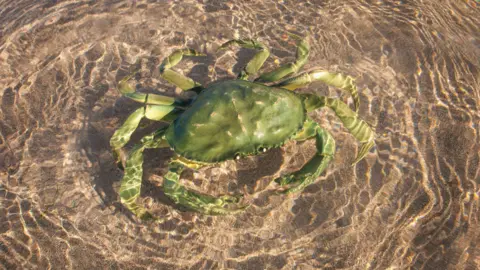 Getty Images
Getty ImagesViral social media memes being shared by millions of users gleefully declare that humanity’s final evolutionary destination is not robots nor extinction – but crabs.
With experts at a crab museum in Margate saying that people come in “every day” questioning if humans really will end up sprouting claws, we take a look at the facts behind the memes.
Professor Matthew Wills from the University of Bath says the joke is rooted in a genuine evolutionary phenomenon called carcinisation – meaning “to become more crab-like”.
Over millions of years, nature has reinvented the crab at least five separate times across various lineages of crustaceans in a bid to improve protection and mobility.
These “imposter crabs” have evolved independently through natural selection, as a rounded shell and signature sideways scuttle offer better chances of survival.
Crabs belong to a group of ten-footed crustaceans called decapods.
Some decapods, like lobsters and shrimp, have a thick cylindrical abdomen with a muscular tail for snapping backwards at high speed and burrowing on the seabed.
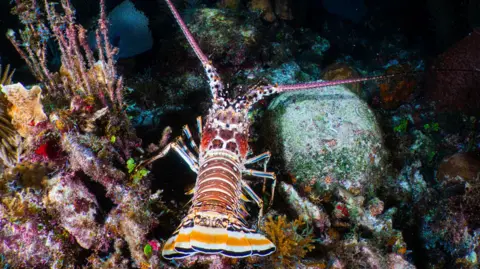 Getty Images
Getty ImagesTrue crabs, by contrast, live in shallow coastal waters and rocky shores, with a compressed abdomen tucked away under a flattened, rounder shell.
This presents fewer vulnerable areas for predators to grab onto, and enables their legs to move sideways so they can escape quickly and shelter in crevices.
But at least four groups of decapods – including sponge crabs, porcelain crabs, king crabs and the Australian hairy stone crab – are ‘imposters’ that have gradually transformed their shape by tucking their tail underneath.
This means ‘crabs’ are not a real biological group. They are a collection of decapods that have evolved over millions of years to look the same.
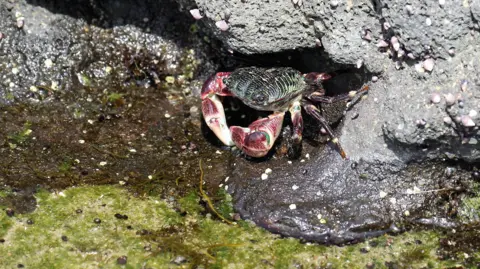 Getty Images
Getty ImagesDr Wills, a professor of evolutionary palaeobiology, said imposter crabs sacrifice their muscular abdomen for better armour.
This process of carcinisation is a form of convergent evolution.
“This is where groups that are not closely related come to look, behave, or be in some sense genetically similar, but they don’t share a common ancestor that also had that attribute,” he said.
“Evolution keeps finding the same answer in different lineages and places.”
Dr Wills gave another example of birds and bats, which both developed wings because they face similar environments, despite being different species in “different major branches of the vertebrate tree”.
 Milner Centre for Evolution
Milner Centre for Evolution“[Crabs] converge because it’s an efficient solution to a particular set of physical problems,” he explained.
“A compact, broad, armoured body with a tucked abdomen helps with defence, crevice-living, wave-swept hydrodynamics, sideways agility, and broad protection.”
Dr Wills said it has been amusing to watch the internet debate unfold, but “the answer is still no”, humans will not evolve into crabs.
“The convergent evolution of crabs has happened about five times in history, but it’s happened within the group of decapods.”

